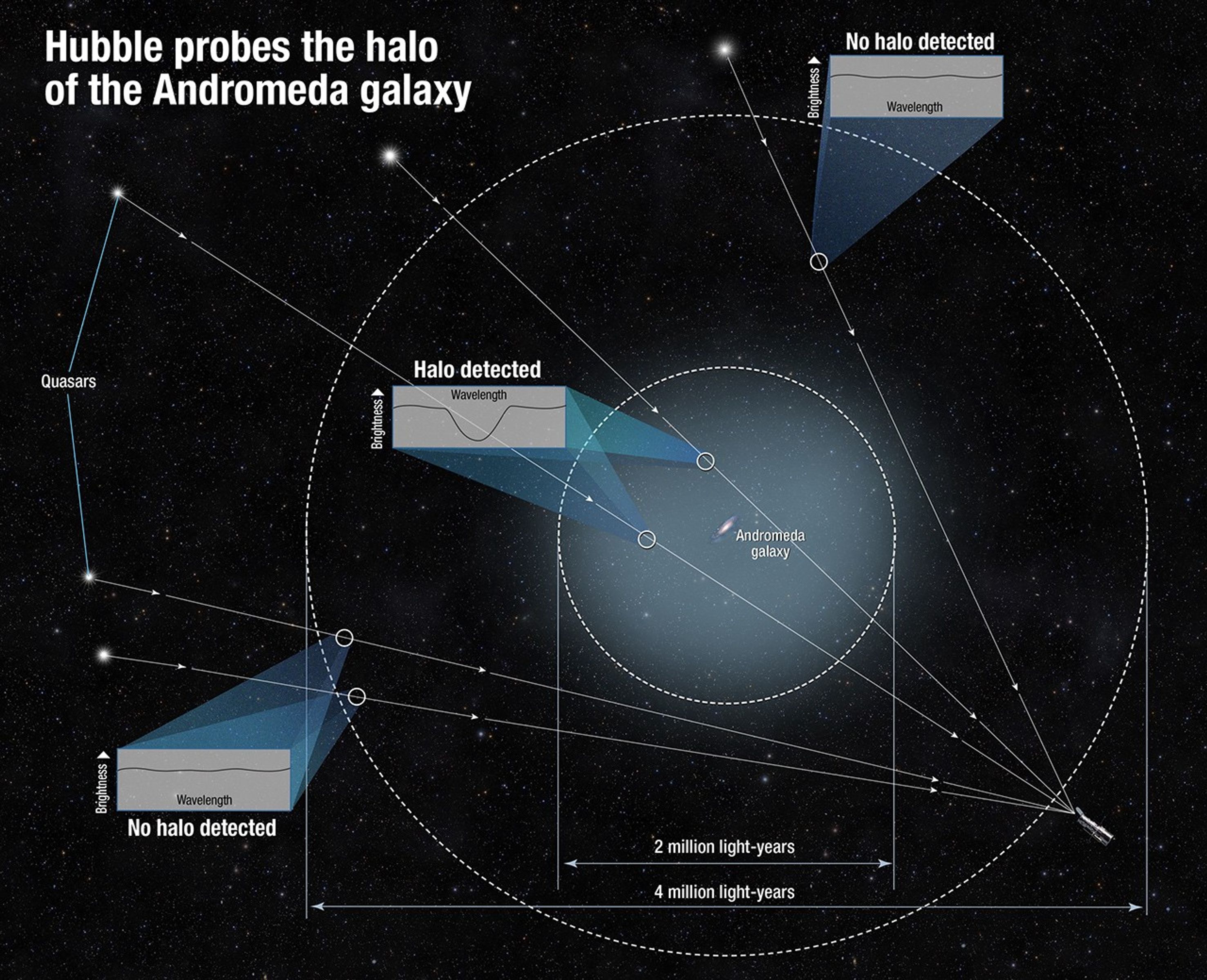1 min read
Hubble Probes the Halo of the Andromeda Galaxy

This diagram shows how scientists determined the size of the halo of the Andromeda galaxy. Because the gas in the halo is dark, the team measured it by using the light from quasars, the very distant bright cores of active galaxies powered by black holes. They observed the quasars' light as it traveled through the intervening gas. The halo's gas absorbed some of that light and made the quasar appear darker in a very small wavelength range. By measuring the tiny dip in brightness at that specific range, scientists could tell how much gas is between us and each quasar. Some quasars showed no dip in brightness, and this helped define the size of the halo.
About the Object
- R.A. PositionR.A. PositionRight ascension – analogous to longitude – is one component of an object's position.00h 42m
- Dec. PositionDec. PositionDeclination – analogous to latitude – is one component of an object's position.+41° 15'
- ConstellationConstellationOne of 88 recognized regions of the celestial sphere in which the object appears.Andromeda
- DistanceDistanceThe physical distance from Earth to the astronomical object. Distances within our solar system are usually measured in Astronomical Units (AU). Distances between stars are usually measured in light-years. Interstellar distances can also be measured in parsecs.Redshift: 2.5 million light-years (0.8 megaparsecs)
About the Data
- Data DescriptionData DescriptionProposal: A description of the observations, their scientific justification, and the links to the data available in the science archive.
Science Team: The astronomers who planned the observations and analyzed the data. "PI" refers to the Principal Investigator.Ultraviolet observations of multiple quasi-stellar objects (QSOs) seen through the extended circumgalactic medium around M31 were obtained from various HST proposals. Studies of these archival data led to the results found. The science team comprises: N. Lehner and J.C. Howk (University of Notre Dame), and B. Wakker (University of Wisconsin, Madison). - InstrumentInstrumentThe science instrument used to produce the data.HST>COS/FUV
- FiltersFiltersThe camera filters that were used in the science observations.Gratings: G130M, G160M
- Object NameObject NameA name or catalog number that astronomers use to identify an astronomical object.M31, Andromeda Galaxy, Messier 31, NGC 224
- Object DescriptionObject DescriptionThe type of astronomical object.Spiral Galaxy, halo
- Release DateMay 7, 2015
- Science ReleaseHubble Finds Giant Halo Around the Andromeda Galaxy
- Credit
Share
Details
Last Updated
Aug 17, 2025
Contact
Media
Claire Andreoli
NASA’s Goddard Space Flight Center
Greenbelt, Maryland
claire.andreoli@nasa.gov




























